Vybarr Cregan-Reid's Blog
August 19, 2017
I love writing apps, but now I hate Ulysses
I wrote most of my last book, Footnotes, in an app called Scrivener. I still really like it – it has a cool simplified but powerful IOS version, but the compiling process (the bit where you output the words you’ve written) seemed a bit buggy and very complicated. Also, the IOS version was a long time coming, so I drifted about a bit between apps as the chapter for Footnotes strolled in. I would say that about 20-30% of Footnotes was actually written on my iPhone in plain texts in coffee shops after runs that later synced up with Scrivener. These apps enabled me to make an organic link between the experience and its recreation in prose.
That is until I heard about Ulysses. At first it seemed like the Holy Grail. Simple to use, but powerful underneath, and the compile was slick, clean and stylish. (Top tip: compiling in a variety of formats makes it much easier for writers to catch typos). So I invested in it. I bought the desktop app for my Mac (I think about £35+), then I bought versions for my phone and iPad (can’t remember how much they were, but they were more expensive than Scrivener £15 each?). And it worked like a dream. I didn’t like not being able to see the sync progress, but other than that it was great – a clean and price writing environment where thoughts could happen.
One of Scrivener’s advantages over Ulysses was its research management (that you could import websites, PDFs, etc). But I had outsourced that from Scrivener to another app called DevonTHINK (it’s amazing). I had used Evernote for research and capture-stuff, but they switched to a subscription model, hiked the price, and made the app a whole lot crAPPer, too. DVT cost about £120 for the whole suite, but I have no regrets at all. It’s a great research management tool. Scrivener for my words, DevonTHINK for everyone else’s.
[image error]So I have been using Ulysses on and off for a couple of years. I opened up the app today and it informed that they, too are switching over to a subscription model. But I already paid, quite a lot, for these apps – now I have to ‘subscribe’ to them, too? It seems more like a form of ransomware (we have taken control of your software and unless you continue to pay us, you cannot use it.) It feels like the greediest and most tightfisted way to do business imaginable. My solution is simple. I’m deleting the apps and will never use them again.
Thank God there is Scrivener. All I have had to do to accustom myself to the change is spend an hour or two familiarising myself with the ins and outs of the Compile complexities, and now there is no longer any reason to have Ulysses at all. Goodbye!! It’s not me, it’s you.


January 24, 2017
Running makes you smarter – here’s how
Vybarr Cregan-Reid, University of Kent
As far back as the Greeks and Romans, humans have documented the belief that there is a strong link between exercise and intelligence. But in the last two decades, neuroscience has begun to catch up with Thales and Juvenal’s idea that a sound mind flourishes in a healthy body. While the studies unite in telling us that running will makes us smarter, it is only partly true. The process is more complicated and reveals more about the wonderful complexities of both the human body and its evolution. Although the science might be helping us to understand how the mechanisms work, an important question remains: why does running make us smarter?
Two studies, one published by Finnish researchers in February and the other in Cell Metabolism in June, have expanded our understanding of the mechanisms involved in running and the ways that it enhances memory and cognition. Before these, it was understood that exercise induced a process called neurogenesis (where new brain cells are created) in a part of the brain involved in memory formation and spatial navigation, known as the hippocampus.
While intense exercise will create brain cells, they are basically stem cells waiting to be put to use. Exercise doesn’t create new knowledge; rather, it gives you the mental equivalent of a sharpened pencil and clean sheet of paper. It prepares you for learning, but you have to actively do some learning yourself, too. Integrating exercise into your working or studying day would seem like a sensible option, if this particular benefit is of interest to you.
What the new research tells us is that it is not just any exercise that will create new brain cells for you. In the study by Finnish researchers, they discovered that only certain kinds of exercise are likely to result in the growth of new brain cells in adults.
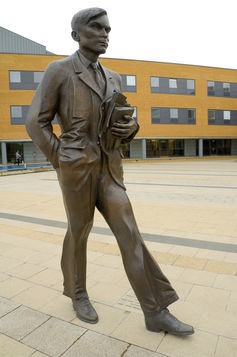
Marathon man, Alan Turing.
According to the researchers, the exercise needs to be “aerobic and sustained”. But they also looked at the neurobiological effects of the currently popular “high intensity interval training” (HIT), as well as resistance training (weightlifting). While the team discovered a minor response after HIT there was no response at all after the resistance training. So HIT will have a small impact on cognitive abilities, while weightlifting, it seems, will definitely not make you smarter. (The weightlifters have Arnold Schwarzenegger in their camp. Runners have the mathematical genius capable of running a marathon in 2 hours 46 minutes, Alan Turing, in theirs. As a committed distance runner, I’m saying nothing …)
Brain’s Miracle-Gro
Since the 1990s, it has been understood that exercise also assists in learning because the activity produces a protein called brain-derived neurotrophic factor (BDNF). BDNF promotes the growth of new neurons and supports existing ones. John Ratey, a Harvard professor of psychiatry, called it “Miracle-Gro for the brain”.
The Cell Metabolism study examined Cathepsin B (CTSB) protein secretion during running. By assisting in the expression of BDNF, this protein had beneficial effects on cognition, specifically enhanced adult brain cell growth in the hippocampus and spatial memory function.
The science is just settling into its pace and I am sure that in the next few years more and more research will appear to make sense of our deep love for this most simple and natural form of exercise. But there’s still that question: why does the body need to reward us with greater cognitive function and more effective spatial memory and awareness just because we run?
I think the answer is to be found in natural selection. We have not evolved to be healthy, or to have a nice experience on this earth. Evolution is only really interested in the human body staying alive long enough to procreate. From that point on, natural selection is more or less disinterested in our well-being. When we look at these cognitive rewards in this way what do they tell us about ourselves and the human body?
Outrunning your knowledge
The human body has been around for about 2m years, and only in the last few thousand of these have we become literate – map-makers that can walk, make notes, and record journeys. For most of our history we have not had the technology that allows us to outsource this heavy cognitive work to a piece of paper, or a GPS.
As a child, the 19th-century poet, John Clare, desired to walk to the edge of the horizon to find new worlds beyond. He wanted, he said, to walk all the way out of his knowledge. I think that what these discoveries about running and improving cognitive abilities tell us is that the hunter-gatherers of prehistory had to have the ability to outrun theirs.
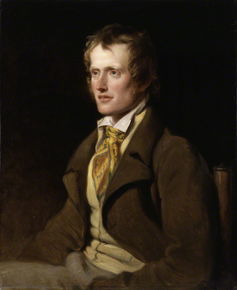
John Clare outwalked his knowledge.
Wikimedia
The many tweaks to the human body that make it possible for us to run for 10km on a hot day (standing on two feet, with the ability to sweat to keep cool) mean that even though we are slow in a sprint, we can chase down almost any animal on the planet to the point of exhaustion over longer distances. This is called persistence hunting, and it was a risky activity because it required hunters to leave behind the places they knew in the determined pursuit of prey. With no map-making technologies, the navigational skills of the brain had to step up and do all the work. So those people who adapted this brain cell growth response to distance running were more likely to find their way back to their tribe, and consequently, to survive.
The growth of new brain cells in the hippocampus and the enhancement of spatial memory that is brought on by endurance running is basically an evolutionary safety net for when you have outrun your knowledge, when you have run so far that you no longer know where you are and you need to learn, fast. It is a mechanism that makes information uptake easiest when historically you might have been tired, lost, and at your most vulnerable.
So lace up, step out the door, and prepare yourself for the rewards of an out of knowledge experience.
Correction: The original version of this article said that Alan Turing could run a marathon in “2.4 hours”. It has now been corrected to: “2 hours 46 minutes”.
Vybarr Cregan-Reid, Author of ‘Footnotes: How Running Makes us Human’ (Ebury, 2016) & Reader in Nineteenth-Century Studies at the the University of Kent, University of Kent
This article was originally published on The Conversation. Read the original article.


January 22, 2017
Footnotes on tour
Here is a list of upcoming events at literary festivals and the like. It would be lovely to see some of you, there.
Words on the Water 10 Mar 2.15pm Theatre by the Lake, Derwentwater
Glasgow, Aye Write! 18th March, 4.45pm
ChipLit Fest – Chipping Norton Literary Festival THE MAGIC OF RUNNING Sat 29 April 17:15 @ The Chequers
Bradford Literary Festival, TBC probably 8-9th July


December 8, 2016
November 24, 2016
Book signing – Canterbury, Dec. 7th
Calling all Canterbury Running Types. Lauren Elkin and I will be discussing our books and the poetry of motion on Dec 7th at Waterstones Rose Lane in Canterbury. All welcome. (I hear running books make a very good Christmas gift)
https://www.waterstones.com/…/the-poet…/canterbury-rose-lane


October 10, 2016
The Poetry of Motion – Event at Waterstones Greenwich, Oct 14th
https://www.waterstones.com/bookshops/greenwich
Join us at Waterstones Greenwich as we welcome local author Vybarr Cregan-Reid author of the acclaimed book Footnotes: How Running Makes Us Human, and Lauren Elkin, whose Flaneuse: Women Walk the City in Paris, New York, Tokyo, Venice and London was selected as Radio 4 Book of the Week.
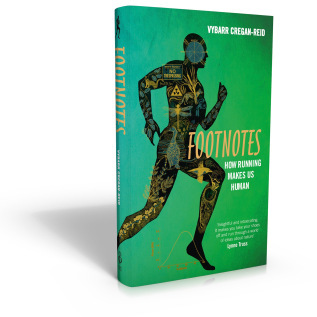 When Vybarr Cregan-Reid set out to discover why running meant so much to so many, he began a journey which would take him out to tread London’s cobbled streets, climbing to sites that have seen a millennium of hangings, and down the crumbling alleyways of Ruskin’s Venice. Footnotes transports you to the cliff tops of Hardy’s Dorset, the deserted shorelines of Seattle, the giant redwood forests of California, and to the world’s most advanced running laboratories and research centres, using debates in literature, philosophy and biology to explore that simple human desire to run. Liberating and inspiring, this book reminds us why feeling the earth beneath our feet is a necessary and healing part of our lives.
When Vybarr Cregan-Reid set out to discover why running meant so much to so many, he began a journey which would take him out to tread London’s cobbled streets, climbing to sites that have seen a millennium of hangings, and down the crumbling alleyways of Ruskin’s Venice. Footnotes transports you to the cliff tops of Hardy’s Dorset, the deserted shorelines of Seattle, the giant redwood forests of California, and to the world’s most advanced running laboratories and research centres, using debates in literature, philosophy and biology to explore that simple human desire to run. Liberating and inspiring, this book reminds us why feeling the earth beneath our feet is a necessary and healing part of our lives.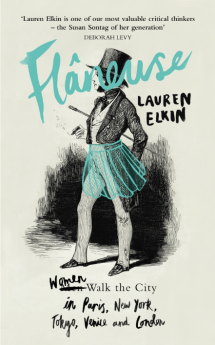
If the word flaneur conjures up visions of Baudelaire, boulevards and bohemia – then what exactly is a flaneuse? In this gloriously provocative and celebratory book, Lauren Elkin defines her as ‘a determined resourceful woman keenly attuned to the creative potential of the city, and the liberating possibilities of a good walk.’ Part cultural meander, part memoir, Flaneuse traces the relationship between the city and creativity through a journey that begins in New York and moves us to Paris, via Venice, Tokyo and London, exploring along the way the paths taken by the flaneuses who have lived and walked in those cities. From nineteenth-century novelist George Sand to artist Sophie Calle, from war correspondent Martha Gellhorn to film-maker Agnes Varda, Flaneuse considers what is at stake when a certain kind of light-footed woman encounters the city and changes her life, one step at a time.


July 21, 2016
Does running make you smarter?
Being Human is 5% inspiration and 95% perspiration
From my article on The Conversation
I’m writing this on the UK’s hottest day of the year. There is a light breeze, but everyone I have seen today has beads of sweat on their forehead. Seeing someone wiping their brow is a fairly common sight in midsummer, but it reveals a simple and fascinating truth about our species: without sweat, we would not still be here. Without this absolutely amazing technology we would not have climbed our way to the top of the evolutionary pile. Many animals perspire, but no others use it as such an efficient and refined cooling technology. So how does it work and why do we owe it so much?
We often assume that it is our brain power that differentiates us from other animals. It is obvious that we are able to process more intellectual stimuli than other mammals, but any PC owner knows that computational power is completely useless if the cooling system fails. And this is what really sets us apart. It is our ability to maintain an effective working temperature, not just so that we can keep moving, but so that we can keep thinking while in motion, efficiently chasing down the quarry.
As a species, over short distances, we are hopeless runners. We might be able to go a long way but what use is that if we can’t catch anything? The truth is that we never could if it weren’t for several factors that make us identifiably human. And it is our ability to perspire which renders them all effective. So we may have perfect bodies for distance running, but those features that enable us to move so effectively are useless without correct temperature control.
Two legs are better than four
There are distinct thermoregulatory advantages to being a two-legged human. Being merely upright, for example, means that less of the sun hits you when it’s at its hottest. The bipedal human exposes only about 7% of their surface area to sunlight; it is triple this for a quadruped. This fact alone means that being on two legs enables you to move with greater heat efficiency.
Also, by being upright, we can take advantage of the fact that our brains are further away from the harsher micro-climate at ground level. It is hotter there because it is heated by the sun and because there is less air movement. And with air movement comes evaporation, which is the real miracle technology. Evaporation is such an effective way to lose heat that if a litre of sweat is able to evaporate on the surface of your skin, you can lose about half a million calories of heat in the process.
While most quadrupeds sweat, they do so to maintain skin health and create scent (we do this, too), and even to create ear wax (which, amazingly, is a sort of sweat). But for thermoregulation, most animals use interior air movement (panting) to cool down – where their bodies have to actively work to lose heat. So that means, on a hot day, we could chase down a quadruped, and when it stopped to shed some heat, we humans could keep going and close the gap a little. Eventually, the distance between predator and prey would close as their technology failed, and ours kept functioning. Sweat meant that we were much better hunters than we appeared.
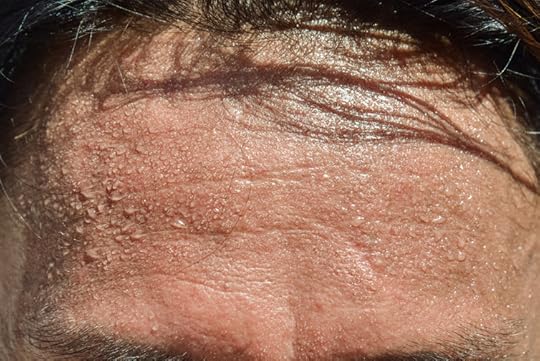
In every bead of sweat there is sodium, potassium, calcium, magnesium, zinc, copper, iron, chromium, nickel and lead.Chaikom/Shutterstock
Conflicting sweat signals
It is decidedly odd that sweat is taboo in our society. Do it in the wrong place or from the wrong part of your body and the people around you will become uncomfortable, or at the very least make you feel so … and that will probably make you sweat.
Sweat in a gym and it’s aesthetic: it’s a badge of honour. It’s part of the training montage of any sports movie you might think of. But get it wrong – sweat in a job interview, a presentation, or in a social situation – and people will think you’ve lost control, or that it’s a stress response because you are deceiving them. But without it we would never have become who we are, have survived to the point when we could invent things, create art, make music, or surf the net.
So as you struggle through the next few days of hot weather, think of those beads of sweat on your forehead, and the fact that the exposed skin there, and its ability to perspire, is what keeps your brain functioning in the heat. In the past, it made you a lethal weapon out on the savanna, now it might allow you to reflect on what it has allowed you to achieve in the past, and that without those 2.5m sweat glands on your skin working to maintain the correct temperature for thought, you would not be here, reading this.


May 31, 2016
The Magic Pill For Happiness And Health Is Simply Going For A Jog
As we get older, trying to get healthy can be a full time job in itself. Author Vybarr Cregan-Reid feels he’s got the perfect solution to give you happiness and health and it won’t have to cost you a penny. He brings us today’s Morning Story.
See video at:
The Magic Pill For Happiness And Health Is Simply Going For A Jog


Running numbers continue to rise, here’s why
This article appeared in The Conversation, and has since been syndicated across five continents.
With a reported 2 million of us running in the UK (and an estimated 1010 million million in the US), running is on the rise, and fast becoming the most popular form of exercise.
It fits as snuggly into modern life as an eager foot into a plush pair of new trainers. It can be done alone and in almost any environment. As a solitary activity, there is no need to work around other people’s schedules. There are no courts, pitches, nets, bats, racquets or hoops necessary. You can just put on your shoes and go. It feels like the most natural way to exercise, but it has not always been this way.
Although running has a complicated history, we know that jogging as a palliative only took off in the 1960s and 70s. Since then it has become a huge business with the athletic shoe industry alone worth tens of billions.
Before the jogging revolution, though, it was a distinctly niche activity, practised regularly at the more affluent schools. A quick leaf through the periodicals of the nineteenth century (like Bell’s Life in London and Sporting Chronicle) confirms it was a sport for gentlemen (and sometimes, for the hustlers that conned them).
Loosely defined, sport has been recorded since the beginning of documented history (The Epic of Gilgamesh from 3,500 years ago recounts scenes of wrestling and hunting, and it is a regular mainstay of literature since then).
Exercise, as we might recognise it, being movement for the purposes of maintaining physical health, only becomes common around the early nineteenth century.
It is a feature in Jane Austen novels. Fanny in Mansfield Park is forever ‘knocked up’ on the sofa as the result of a good walk, but exercise is mostly a pastime for the daughters of gentry, for whom the competition inherent in sport would not be appropriately gendered behaviour. Moreover, Austen often uses the idea of exercise and movement to pass judgement on her characters: generally, those who over-indulge in it are villainous or not to be trusted, and those who possess more moderate appetites for it are usually our hero and heroine. The finest walker in Austen is Pride and Prejudice’s Elizabeth Bennet, who seemingly strikes just the right balance when she arrives at Netherfield with flushed cheeks and muddy skirts to visit her sister – surely, the Georgian equivalent of a trail run.
By the nineteenth century, then, exercise emerges as an activity commonly seen around the leisured classes. Without physical work, their bodies wither and weaken, so must be exercised. Which is where the inventors came in.
In 1797, the Monthly Magazine announced a new patent for Francis Lowndes’s Gymnasticon, the earliest of static exercise machines. The magazine explained that it may be of use “when peculiar or sedentary occupations enforce confinement to the house“.
Whenever I have displayed this image at a talk, it is guaranteed to make the audience laugh. It seems such an undignified contraption, but how different is it to, say, a cross-trainer?
Austen’s suspicion of exercise seems to hold true for us today. Individuals will run in parks, but won’t do aerobics workouts in them. P.G. Wodehouse was right in his first Blandings novel, Something Fresh (1915), where he explained that anyone who wished to exercise outdoors in London had a choice: either give up, “or else defy London’s unwritten law and brave London’s mockery”. But if exercise is degrading why, as every year goes by, are there more runners?
The answer is that you only have to put on a TV to see that sport is respected worldwide, but exercise is not revered in the same way. And, I think that running is popular because it has its feet in both camps of sport and exercise. It is a permissible public activity because of its associations with sport (unlike Zumba, for example).
The industrial revolution has swept away most of our forests and green spaces, and in doing so changed completely our ways of working, leaving us desperately searching for the easiest means to exercise because it is no longer a part of our working day, but an addition to it.
The number of runners will only continue to increase in the coming years, as austerity bites and convinces us to work ever longer hours, over more days. In rejecting our lethargy, we will continue to look to the easiest, cheapest most-accessible and enjoyable activity that we can. One that does not require you to buy a Gymnasticon and set it up in the shed. Running is just about the only intense aerobic activity that does not require you to brave London’s mockery.
And it’s terrific fun.


Vybarr Cregan-Reid's Blog
- Vybarr Cregan-Reid's profile
- 31 followers







